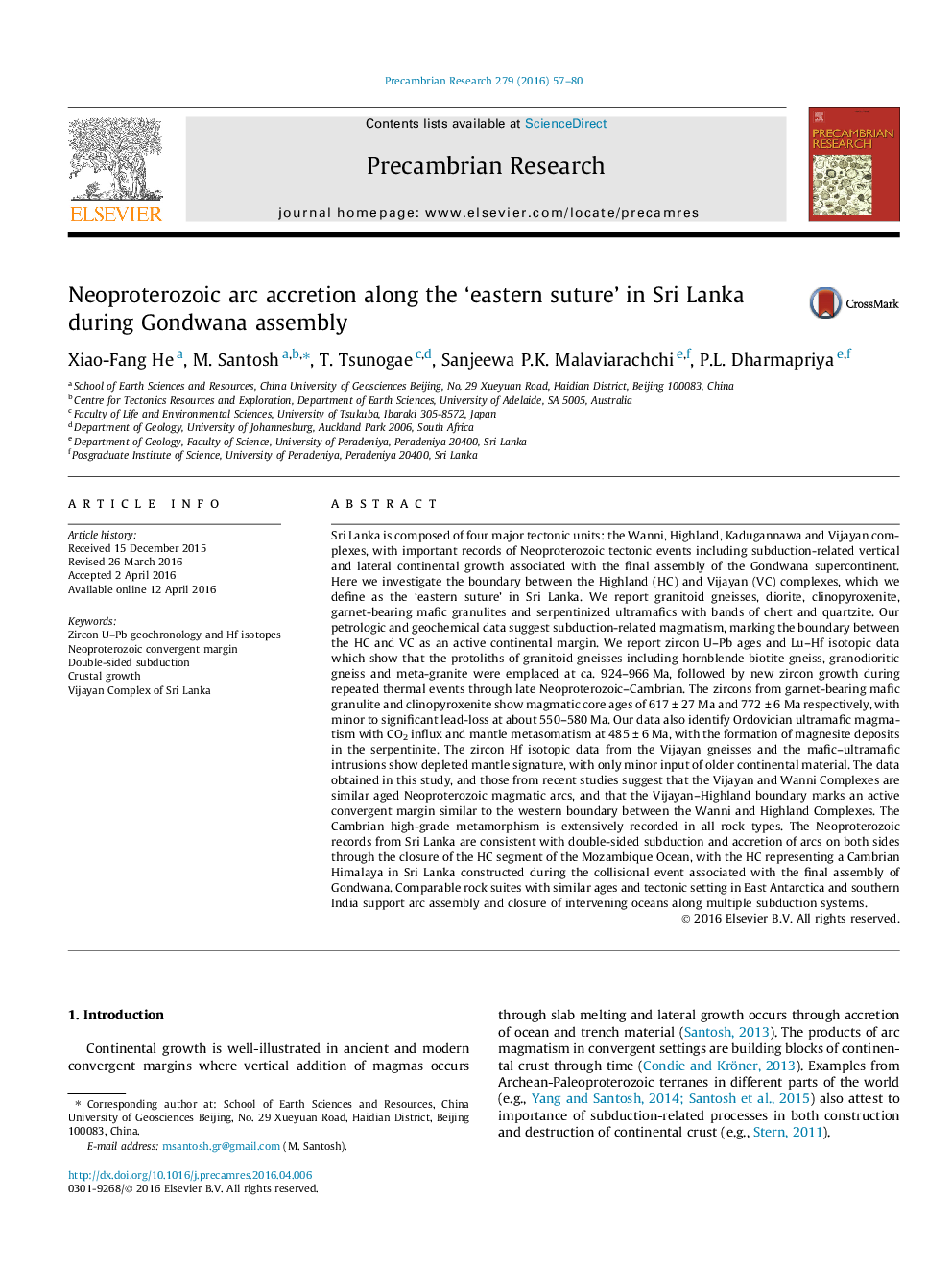| کد مقاله | کد نشریه | سال انتشار | مقاله انگلیسی | نسخه تمام متن |
|---|---|---|---|---|
| 4722416 | 1639596 | 2016 | 24 صفحه PDF | دانلود رایگان |

• The boundary between Highland and Vijayan Complexes marks the ‘eastern suture’ in Sri Lanka.
• Neoproterozoic arc magmatism in convergent margin setting in the Vijayan Complex.
• Double sided subduction and accretion of arcs along both sides of the Highland Complex.
Sri Lanka is composed of four major tectonic units: the Wanni, Highland, Kadugannawa and Vijayan complexes, with important records of Neoproterozoic tectonic events including subduction-related vertical and lateral continental growth associated with the final assembly of the Gondwana supercontinent. Here we investigate the boundary between the Highland (HC) and Vijayan (VC) complexes, which we define as the ‘eastern suture’ in Sri Lanka. We report granitoid gneisses, diorite, clinopyroxenite, garnet-bearing mafic granulites and serpentinized ultramafics with bands of chert and quartzite. Our petrologic and geochemical data suggest subduction-related magmatism, marking the boundary between the HC and VC as an active continental margin. We report zircon U–Pb ages and Lu–Hf isotopic data which show that the protoliths of granitoid gneisses including hornblende biotite gneiss, granodioritic gneiss and meta-granite were emplaced at ca. 924–966 Ma, followed by new zircon growth during repeated thermal events through late Neoproterozoic–Cambrian. The zircons from garnet-bearing mafic granulite and clinopyroxenite show magmatic core ages of 617 ± 27 Ma and 772 ± 6 Ma respectively, with minor to significant lead-loss at about 550–580 Ma. Our data also identify Ordovician ultramafic magmatism with CO2 influx and mantle metasomatism at 485 ± 6 Ma, with the formation of magnesite deposits in the serpentinite. The zircon Hf isotopic data from the Vijayan gneisses and the mafic–ultramafic intrusions show depleted mantle signature, with only minor input of older continental material. The data obtained in this study, and those from recent studies suggest that the Vijayan and Wanni Complexes are similar aged Neoproterozoic magmatic arcs, and that the Vijayan–Highland boundary marks an active convergent margin similar to the western boundary between the Wanni and Highland Complexes. The Cambrian high-grade metamorphism is extensively recorded in all rock types. The Neoproterozoic records from Sri Lanka are consistent with double-sided subduction and accretion of arcs on both sides through the closure of the HC segment of the Mozambique Ocean, with the HC representing a Cambrian Himalaya in Sri Lanka constructed during the collisional event associated with the final assembly of Gondwana. Comparable rock suites with similar ages and tectonic setting in East Antarctica and southern India support arc assembly and closure of intervening oceans along multiple subduction systems.
Figure optionsDownload as PowerPoint slide
Journal: Precambrian Research - Volume 279, July 2016, Pages 57–80